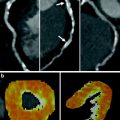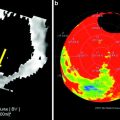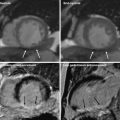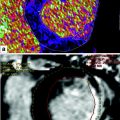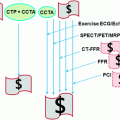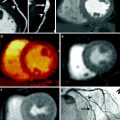U. Joseph Schoepf, Fabian Bamberg, Balazs Ruzsics, Rozemarijn Vliegenthart and Gorka Bastarrika (eds.)Medical RadiologyCT Imaging of Myocardial Perfusion and Viability2014Beyond Structure and Function10.1007/174_2013_931
© Springer-Verlag Berlin Heidelberg 2013
CT Imaging of Myocardial Perfusion and Viability: Future Perspectives
(1)
Division of Cardiovascular Imaging, Department of Radiology and Radiological Sciences, Medical University of South Carolina, Charleston, SC, USA
(2)
Department of Radiology and Radiological Science, Medical University of South Carolina, Charleston, SC, USA
Abstract
The notion of evidence-based medicine (EBM) has transformed the science and practice of medicine substantially over the past decades. EBM has been defined as “the conscientious, explicit and judicious use of current best evidence in making decisions about the care of individual patients” (Sackett et al. 1996). EBM thus demands that medical procedures be justified by objective measures of performance. This general trend in healthcare has long been ignored by the radiological field, with the formal concept of evidence-based radiology (EBR), only recently established (Evidence-Based Radiology Working Group 2001; Sheehan et al. 2007; Collins 2007; Malone 2007; Dodd et al. 2004). At least in part, this may be explained by the conceptual framework of EBM, which is primarily designed to assess the efficacy of therapeutic procedures, such as pharmacological, surgical, or other interventions. Many criteria used to assess the quality of studies and levels of evidence in EBM are not directly applicable to diagnostic imaging.
1 Imaging in the Era of Evidence-based Radiology
The notion of evidence-based medicine (EBM) has transformed the science and practice of medicine substantially over the past decades. EBM has been defined as “the conscientious, explicit and judicious use of current best evidence in making decisions about the care of individual patients” (Sackett et al. 1996). EBM thus demands that medical procedures be justified by objective measures of performance. This general trend in healthcare has long been ignored by the radiological field, with the formal concept of evidence-based radiology (EBR), only recently established (Evidence-Based Radiology Working Group 2001; Sheehan et al. 2007; Collins 2007; Malone 2007; Dodd et al. 2004). At least in part, this may be explained by the conceptual framework of EBM, which is primarily designed to assess the efficacy of therapeutic procedures, such as pharmacological, surgical, or other interventions. Many criteria used to assess the quality of studies and levels of evidence in EBM are not directly applicable to diagnostic imaging.
In an effort to ease the application of EBM theory for diagnostic imaging, a hierarchical 6-step model has been developed specifically for radiology that can be used to classify measures of efficacy in studies investigating diagnostic rather than therapeutic procedures (Evidence-Based Radiology Working Group 2001). In this model, for a diagnostic test to reach the first level of efficacy (technical efficacy) requires a demonstration of technical feasibility and interpretability. At the second level (diagnostic accuracy efficacy), a diagnostic test is evaluated for diagnostic accuracy. The third level (diagnostic thinking efficacy) describes how helpful a test is for advancing the diagnostic process of confirming or excluding a diagnosis or narrowing the spectrum of differential diagnoses. At the fourth level (therapeutic efficacy), the impact of a diagnostic test on patient management must be demonstrated. The fifth level describes the impact of the test on the patient’s outcome (patient outcome efficacy). Last, the sixth and highest level of efficacy consists of an overall benefit-cost analysis from a societal viewpoint (societal efficacy).
Stay updated, free articles. Join our Telegram channel

Full access? Get Clinical Tree


